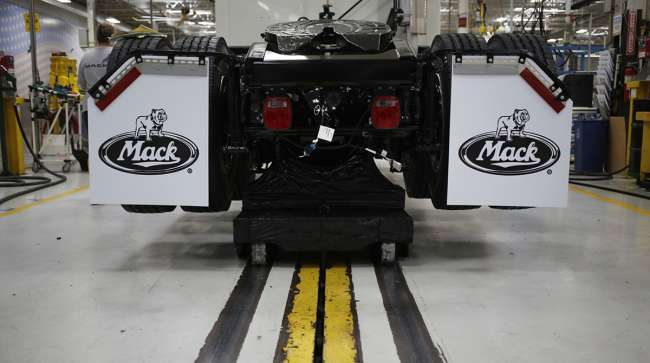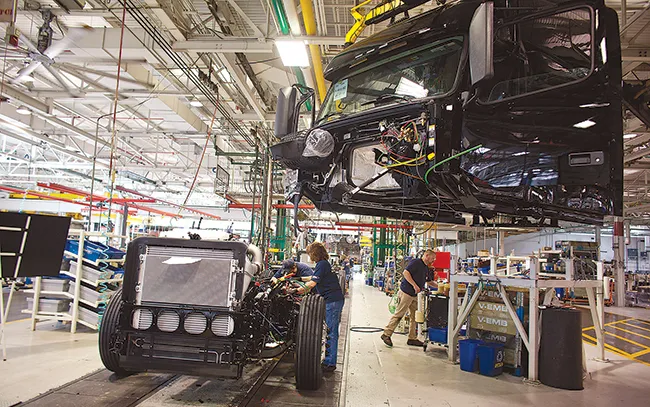Staff Reporter
November Class 8 Orders Rebound From Three-Month Slump

[Stay on top of transportation news: Get TTNews in your inbox.]
North American Class 8 truck orders for November rebounded from three months of year-over-year declines, according to ACT Research.
ACT preliminary data showed orders increased 26.4% to 41,700 units from 33,000 during the year-ago period, and jumped 30.7% from the 31,900 units reported the previous month. The last positive year-over-year result was a 45% increase to 16,000 in July. November net orders also saw their highest monthly volume since October 2022.
“Even though backlogs, in seasonal fashion, are rising, they continue to point to a different market vibe heading into 2024: still good, for sure, but solid rather than stellar,” said Kenny Vieth, president and senior analyst at ACT.
FTR Transportation Intelligence reported Class 8 preliminary net orders for November came in 2% higher year-over-year to 36,750 units, which was also 32% higher than October. Those comparisons fell within expectations given seasonal tendencies and a considerable year-over-year decrease during October.

New trucks on the assembly line at the Volvo AG New River Valley Plant in Dublin, Va. (Justin Ide/Bloomberg News)
“We also saw a more cohesive market for OEMs versus October with the majority seeing increases in orders,” said FTR Chairman Eric Starks. “Despite prolonged weakness in the overall freight market, fleets continue to be willing to order new equipment. Order levels were above the historical average but continue to follow seasonal trends.”
FTR also found total Class 8 orders for the previous 12 months have equaled 255,500 units. Build slots also continued to be filled at a healthy rate, according to the freight forecasting firm. Its report concluded that the slight year-over-year increase in orders in November shows a market that is still performing at a high level historically.
“The November industry orders per ACT were close to 36,000 units for the U.S. and Canada,” said Magnus Koeck, vice president of strategy, marketing and brand management at Volvo Trucks North America. “November of this year was the strongest month since October 2022. There is an expectation of a slowdown in 2024, but November was a positive injection and the orders exceeded our expectations.”
Koeck has seen solid demand among larger fleets, but he also noted that fleets appear to be taking longer to place orders this year compared to previous years. He suspects that is one of the main reasons why the November numbers came in stronger than October. VTNA is anticipating the Class 8 market in U.S. and Canada next year will be strong at around 270,000 units.
Want more news? Listen to today's daily briefing above or go here for more info
“Due to lingering economic uncertainty, year-to-date preliminary orders are pacing below 2022 levels,” said Jonathan Randall, president of Mack Trucks North America. “However, November saw a healthy uptick in orders for Class 8 vehicles, with North American industry demand increasing 28% compared with last year. The recent uptick is aligned with our expectations of a 2024 North American market of 290,000 vehicles.”
“Three months into the model year 2024 build, fleets continue to show confidence in their business into next year,” said Chris Visser, director of specialty vehicles at J.D. Power. “Contract rates have dipped recently but are still historically strong, so it makes sense fleets are staying the course in ordering replacement iron. If this seems contrary to what we frequently hear about the freight market, keep in mind fleet contract business is an entirely different animal than the independent owner-operator business.”
Visser added contract rates have remained strong all through the overcapacity drawdown and spot rate correction that started in early 2022.




